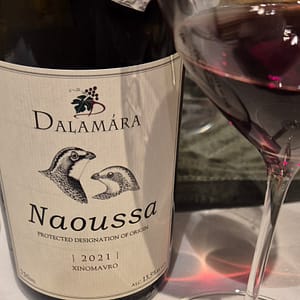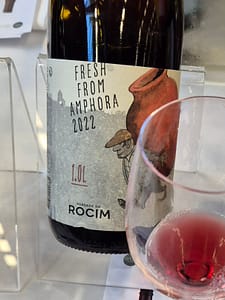This wine was one of many good wines in a xinomavro tasting in my local wine club last Monday. Xinomavro is the most emblematic grape in the northern part of Greece and is characterized by a light colour and crystalline tannins, not very unlike nebbiolo. The prices are generally sympathetic.
Kostis Dalamára is a sixth-generation winemaker in Naoussa, the historic region of Macedonia. When he took over the family estate in 2010 he introduced organic cultivation, spontaneous fermentation and reduced sulfur dioxide levels. The soil in the area is sandy loam to clay, which comes from former limestone and marl rocks.
The grapes for this wine are de-stemmed and fermented in steel tanks, macerates for some 25 days before being moved to 300-500 liter barrels to mature for 6 months in 10% new oak. The rest is 1-14 year old barrels.

Naossa 2021 (Dalamára)
Ruby red. Aroma of mature strawberries, raspberry, sundried tomato and an earthy note. Medium-bodied, with those signature xinomavro tannins and a nice integrated acidity. It’s more fruity than most, somewhere between rusticity and elegance.
Price: Medium
Leave a Comment








